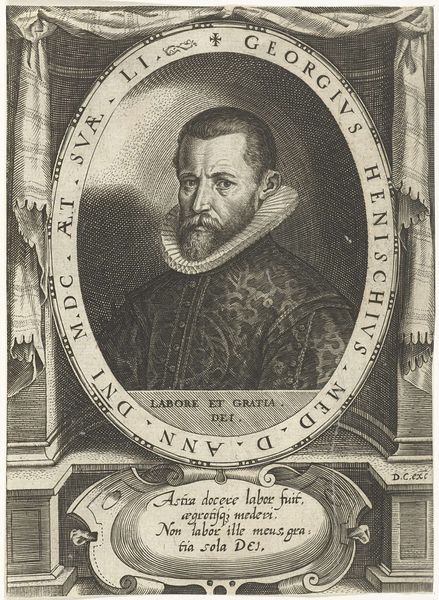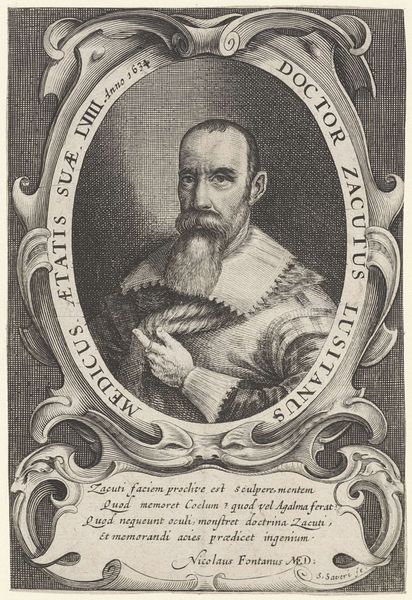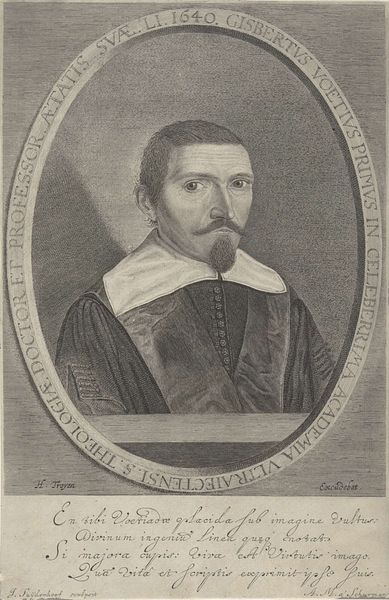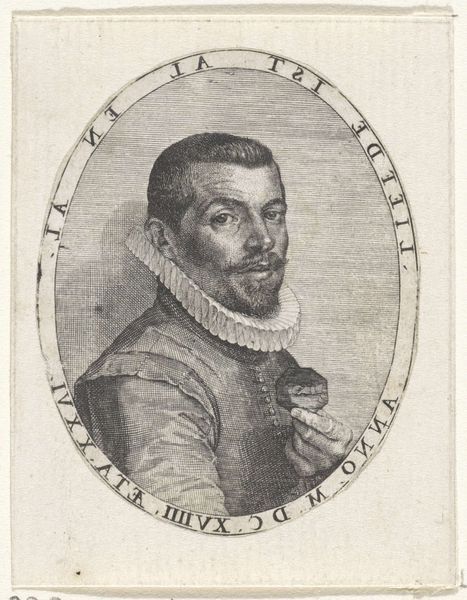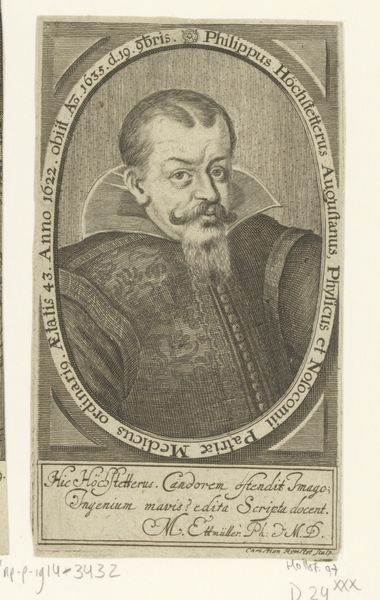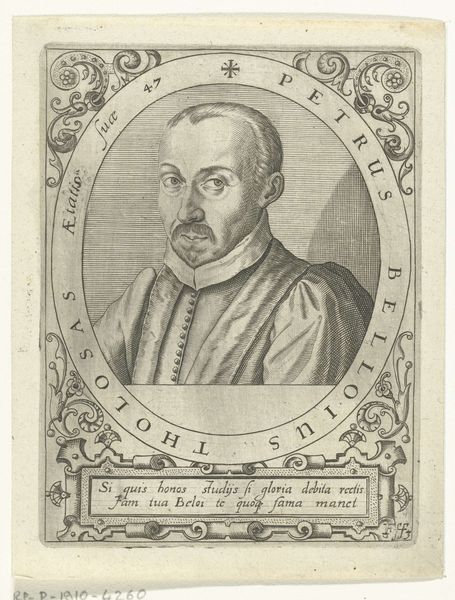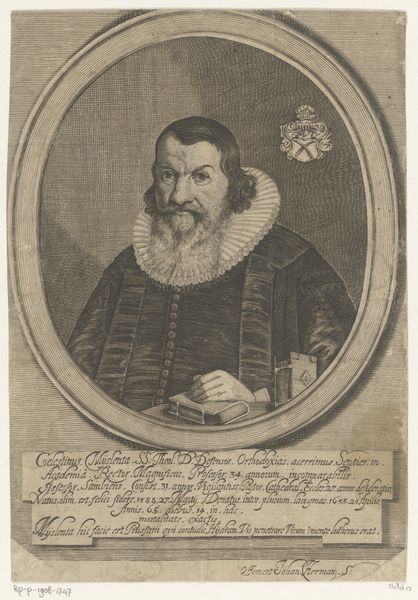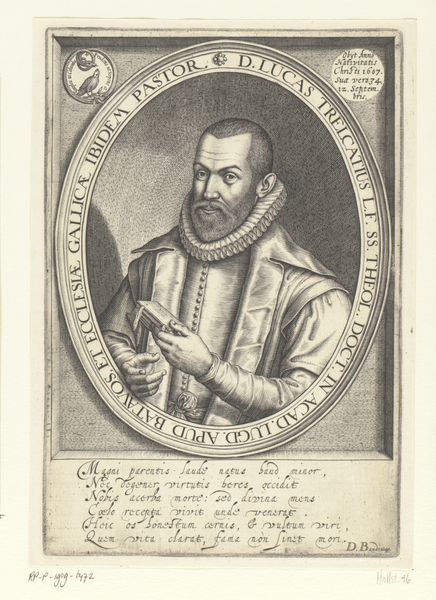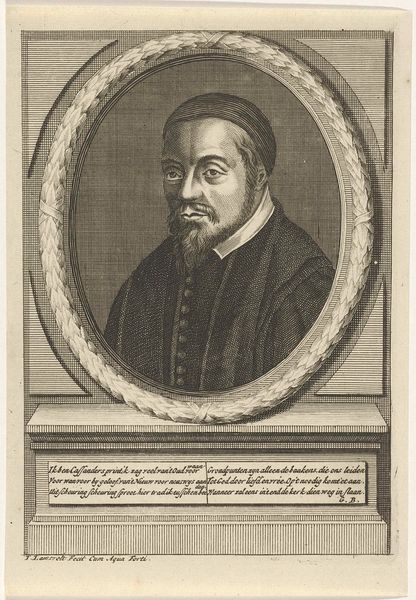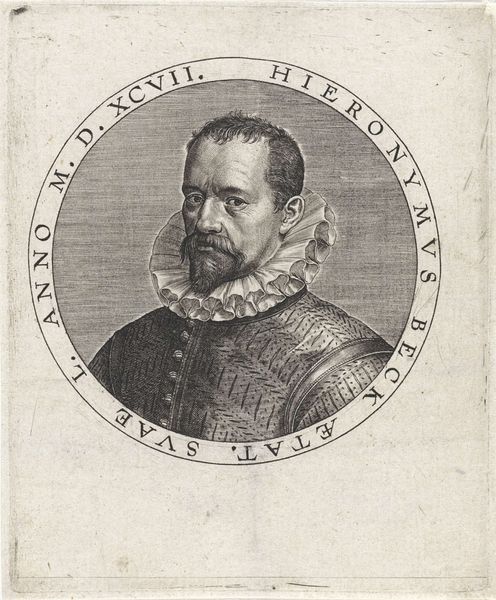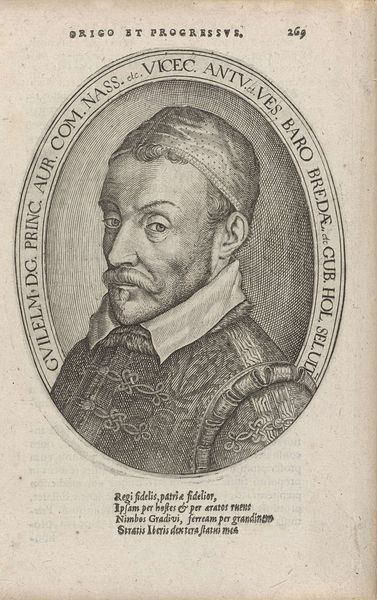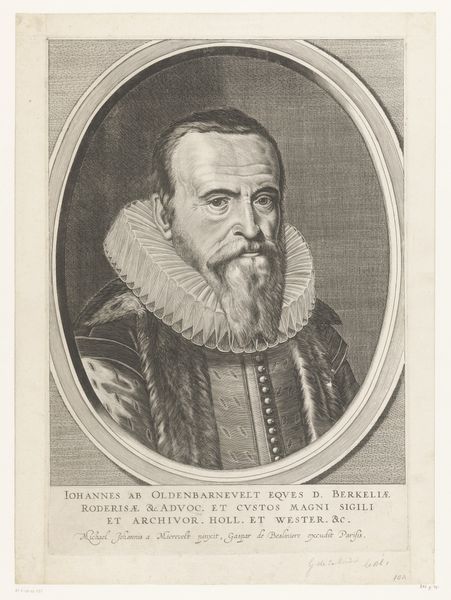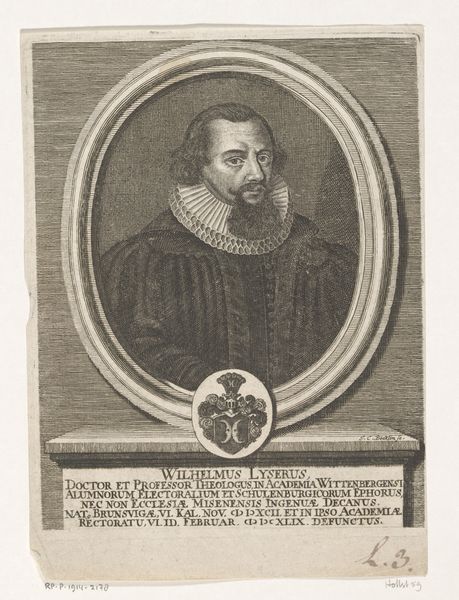
drawing, print, engraving
#
portrait
#
drawing
#
baroque
# print
#
11_renaissance
#
historical photography
#
history-painting
#
academic-art
#
engraving
Dimensions: height 296 mm, width 189 mm
Copyright: Rijks Museum: Open Domain
Curator: Looking at this engraving, made sometime between 1650 and 1695, we see "Portret van Lodewijk Cappellus." The piece is rendered in print. Editor: The gaze is intense, almost unsettling. There’s a sense of profound intellectual weight carried by the figure in this oval frame. The crisp lines give it an air of authority, wouldn't you agree? Curator: Absolutely, and it’s important to note that Cappellus was a Professor of Theology and Hebrew. The text surrounding the portrait celebrates his linguistic expertise. Consider the political implications of scriptural interpretation at this time. How did understanding Hebrew texts intersect with Protestant reform movements and intellectual freedoms? Editor: It also gives us a window into 17th-century concepts of masculinity, and the way scholars presented themselves. Note the restrained, dark clothing contrasting the bright white collar and ornate flourishes surrounding the portrait—they speak of piety, scholarship, and status all at once. It recalls similar status symbolism going back millennia, if you really think about it! Curator: Right, and how might Cappellus’ position as a scholar intersect with early modern ideas of race and colonialism? Access to and interpretation of biblical texts had everything to do with theological and secular justifications for European power structures. The questions we might pose from today’s point of view encourage deeper interrogation. Editor: I'm really intrigued by the emblem in the upper right. The three fleurs-de-lis are very evocative. Is this connected to Cappellus’ family? And what of the ribbon or banner bearing the old saying—how would such features amplify a subject's status? Curator: Precisely. Those symbols provide clues to the narrative of the portrait and the subject's positioning within broader political, intellectual, and religious landscapes. Editor: This engraving, more than a simple portrait, shows how interwoven status and symbols can be! Curator: Yes, and hopefully how critically interrogating these historical images allows for new discourse.
Comments
No comments
Be the first to comment and join the conversation on the ultimate creative platform.
